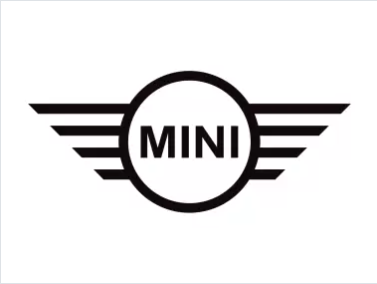
Ignition Lock Repair Near Me
Add a review FollowOverview
-
Founded Date May 3, 1994
-
Posted Jobs 0
-
Viewed 4
Company Description
Van Ignition Repair Tools To Improve Your Daily Life Van Ignition Repair Technique Every Person Needs To Learn

Comprehensive Guide to Van Ignition Repair
The ignition system of a van plays a vital role in its operation, influencing everything from starting the engine to making sure efficient fuel consumption. Nevertheless, it can encounter issues in time due to wear and tear or other external aspects. Comprehending the elements of a van’s ignition system, recognizing indications of failure, and knowing how to repair it can save lorry owners money and time.
Understanding the Ignition System
The ignition system is important for starting the engine and is comprised of several Key Ignition Repair components. Below is a breakdown of these components:
| Component | Function |
|---|---|
| Ignition Switch | Triggers the electrical system and permits the engine to begin. |
| Ignition Coil | Converts the battery’s low voltage into high voltage. |
| Spark Plug | Fires up the air-fuel mix in the cylinders. |
| Distributor | Distributes electrical existing to the proper spark plug. |
| Ignition Timing | Controls the timing of the stimulate for optimal engine performance. |
Indications of Ignition Problems
Van owners must know the signs that indicate an ignition system failure. Acknowledging these early can prevent more severe issues. Some common signs consist of:
- Difficulty Starting: The van may crank gradually or not at all.
- Engine Misfiring: A rough running engine might represent problems with spark plugs or coils.
- Poor Fuel Economy: Ignition problems can cause ineffective fuel usage.
- Stalling: The engine might stop all of a sudden while driving.
- Caution Lights: The check engine light might light up, showing a fault.
Fixing the Ignition System
When faced with ignition problems, van owners can follow an organized method to detect the problem:
-
Check the Battery:
- Ensure the battery is completely charged and the connections are tight.
- Use a multimeter to look for the right voltage.
-
Examine the Ignition Switch:
- Turn the key to the “on” position and confirm that the control panel lights light up.
- Evaluate the ignition switch for continuity with a multimeter.
-
Analyze the Ignition Coil:
- Use a multimeter to inspect the resistance of the ignition coil.
- If it’s outside the maker’s specifications, it might need replacement.
-
Evaluate the Spark Plugs:
- Remove and examine for wear or carbon buildup.
- Replace any malfunctioning trigger plugs.
-
Examine the Distributor:
- Inspect the rotor and cap for signs of wear.
- Replace parts as required to ensure proper circulation of the electric present.
Repair Procedures
After identifying which part is faulty, the next step is to perform the repairs. Here’s a generalized procedure for repairing common ignition problems:
Repairing/Replacing Spark Plugs
- Collect Tools: You’ll need a socket wrench, trigger plug socket, and a space tool.
- Remove the Old Spark Plugs: Disconnect wires and unscrew the plugs.
- Inspect Gaps: Ensure new plugs are gapped properly according to specifications.
- Set Up New Plugs: Screw in and reconnect the wires.
Changing Ignition Coil
- Disconnect Battery: Always start by disconnecting the unfavorable terminal.
- Get Rid Of the Old Coil: Unbolt and detach electrical wiring connections.
- Install New Coil: Bolt the brand-new coil in location and reattach the circuitry.
Repairing the Ignition Switch
- Gain Access To the Ignition Switch: Remove the steering column cover.
- Disconnect Wires: Make note of the circuitry before disconnecting.
- Replace Switch: Install a brand-new switch, making sure all wires are correctly connected.
Cost of Ignition Repairs
The costs of ignition repairs can vary substantially based upon factors such as the lorry make and design, labor rates in the area, and the specific parts being replaced. Below is a typical cost variety for common ignition repairs:
| Repair Type | Average Cost |
|---|---|
| Stimulate Plug Replacement | ₤ 100 – ₤ 300 |
| Ignition Coil Replacement | ₤ 150 – ₤ 400 |
| Ignition Switch Replacement | ₤ 100 – ₤ 250 |
| Complete Ignition Cylinder Lock Repair System Tune-Up | ₤ 300 – ₤ 800 |
Upkeep Tips for the Ignition System
Regular upkeep can prolong the life of the ignition system. Consider the following pointers:
- Regular Inspections: Schedule regular checks of the ignition elements and systems.
- Use Quality Parts: When replacing elements, opt for OEM or top quality aftermarket parts.
- Keep the Battery Maintained: A well-kept battery guarantees optimum performance of the ignition system.
- Enjoy for Warning Signs: Early detection of issues can prevent larger problems down the road.
Frequently Asked Questions (FAQs)
How typically should I replace my stimulate plugs?
Most makers recommend replacing stimulate plugs every 30,000 to 100,000 miles, depending upon the kind of stimulate plug and driving conditions.
Can I repair my ignition system myself?
Yes, basic repairs like replacing stimulate plugs or coils can typically be carried out by a skilled DIYer, supplied the right tools and info are readily available.
What takes place if I disregard ignition system problems?
Neglecting Ignition Replacement Near Me concerns can lead to minimized engine efficiency, decreased fuel effectiveness, and possibly leaving you stranded if the van stops working to start.
Is a tune-up essential for the ignition system?
A tune-up that includes inspecting and changing ignition components as needed can considerably enhance engine performance and durability.
Understanding van ignition repair is vital for car owners to keep reliable engine efficiency. By familiarizing themselves with the ignition system’s components, troubleshooting common issues, and performing basic repairs, they can conserve time and maintenance expenses. Following maintenance suggestions and seeking professional assistance when required will ensure a well-operating ignition system for several years to come.
